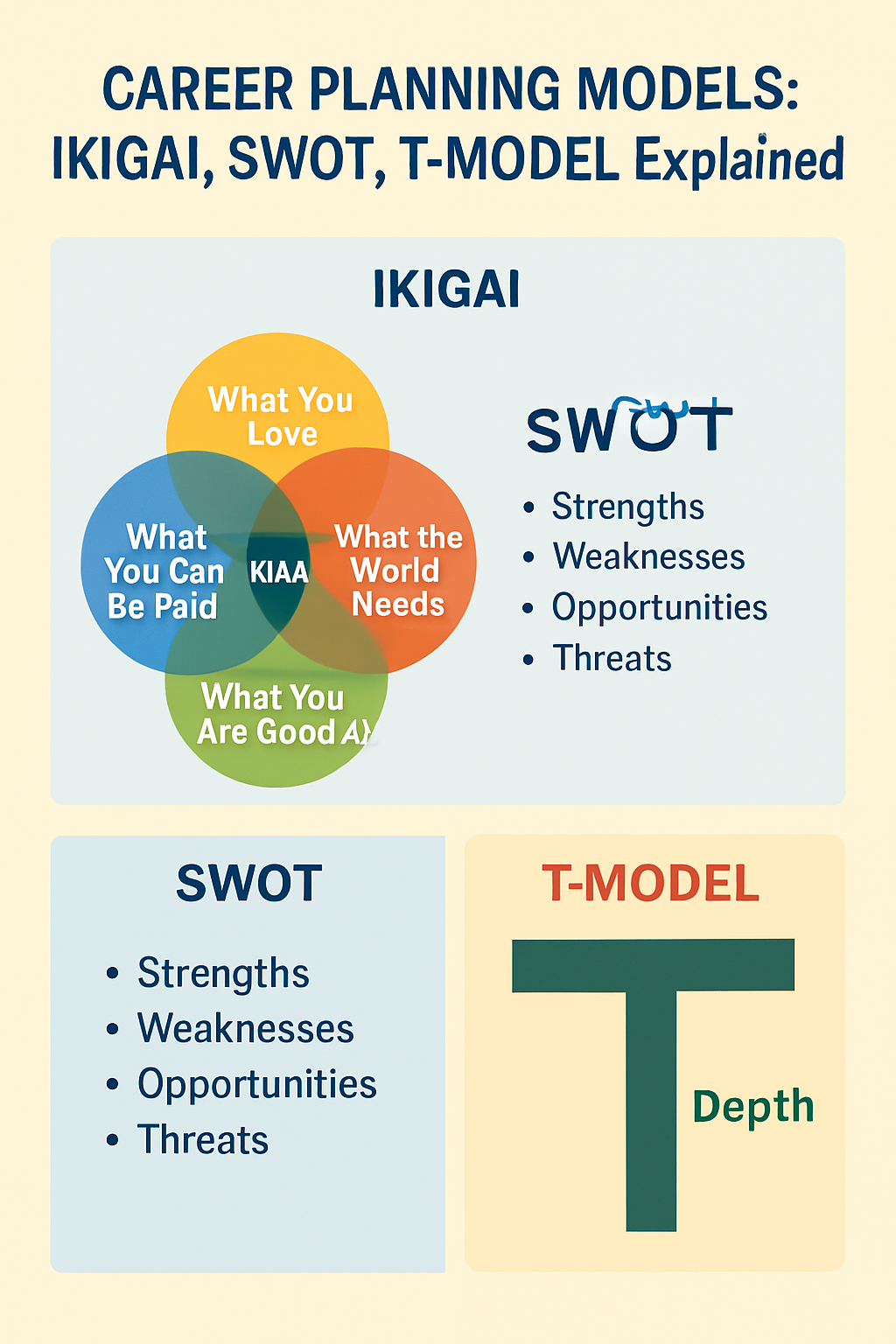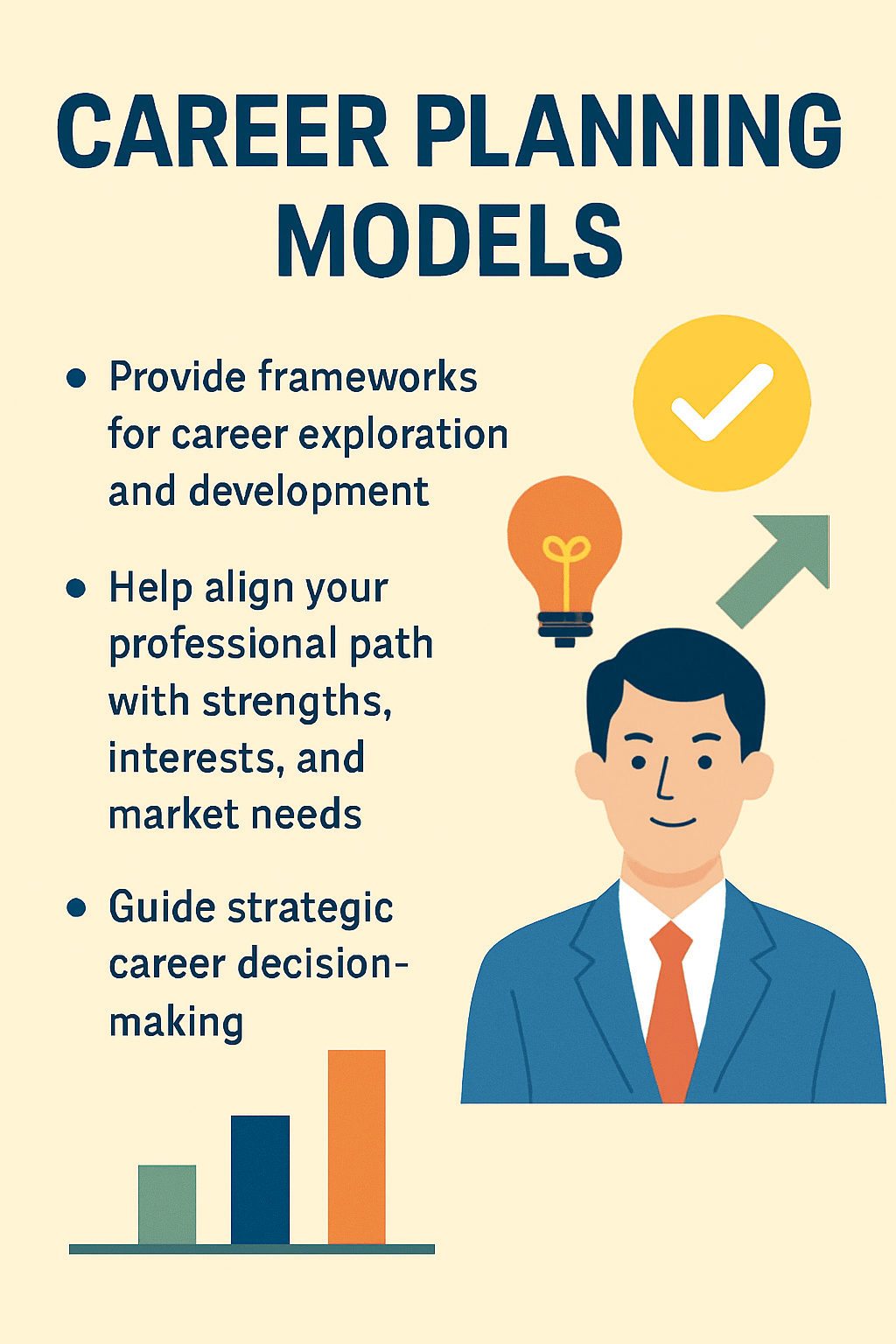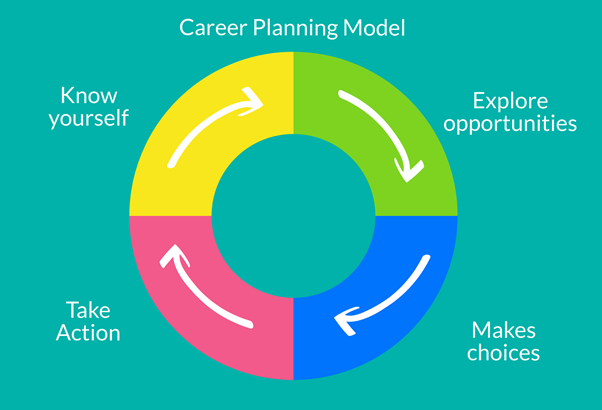Selecting the appropriate career path is daunting. Career planning models such as Ikigai, SWOT, and the T‑Model make informed, well-balanced choices easier. They streamline your thinking. They enable you to align purpose, strength, and growth potential.
Let’s look at each model in an easy-to-understand way. Then, how you can use them together to discover a career that matches your values and abilities.

Ikigai: Find Your Purpose and Passion
Ikigai is a Japanese term that translates as “reason for being.” It will lead you to discover where four things overlap: what you love, what you are talented at, what the world needs, and what you can get paid for. Picture four overlapping circles. The spot where they intersect is your Ikigai.
This model helps you choose work that is fulfilling. It balances your skills, your passions, and what matters to society. You use it when you want long-term satisfaction, not just income.
SWOT Analysis: Map Your Strengths and Risks
SWOT stands for Strengths, Weaknesses, Opportunities, and Threats. It’s a classic tool used in business planning and for personal career decisions. Here’s how it works:
You list your internal strengths and weaknesses. Then, external opportunities and threats. Strengths may include experience or skills. Weaknesses may be missing knowledge. Opportunities could be industry trends. Threats may be strong competition.
By laying out these four areas, SWOT helps you spot your advantages and challenges. You can then plan realistic actions to build on strengths and manage threats.

T‑Model: Build Depth and Breadth
The T‑Model is a visual way to view your skills. It features a letter “T.” The vertical bar represents deep expertise in one area. The horizontal bar shows broad skills across many areas. You combine depth in one domain with general competence in others.
This balance is powerful. Employers value deep knowledge combined with versatility. You build value by deepening your specialty and expanding your related skills.
How to Use These Models Together
Start with Ikigai to understand your core motivation. Ask yourself: what you enjoy, what you excel at, and what others need. From this, identify one or two career paths.
Next, run a personal SWOT for those paths. Map your strengths, weaknesses, opportunities, and threats. This helps you set realistic goals and spot places to grow.
Finally, use the T‑Model. Identify your deepest skill area—maybe design or writing. Then list related skills—like communication or analytics. Aim to become T-shaped: deep in one domain and strong across others.
Read more about campus and off campus placements
Example in Practice
Imagine a person passionate about sustainable design. They use Ikigai and see that they love eco-friendly design, they are good at product design, and they can be paid for sustainable products.
Then they run SWOT. Their strengths: design skills and portfolio. Weakness: limited business knowledge. Opportunity: demand for sustainable products. Threat: competition in design roles.
Using T‑Model, they deepen their core skill in sustainable materials design. They also build skills in user research, project management, and basic marketing. This makes them well‑rounded and hireable.
Why This Approach Works
Ikigai helps you align your purpose and job fit. SWOT gives a real-world view of your readiness. The T‑Model ensures you have both depth and adaptability. Combined, these models guide meaningful career growth.
These tools support planning that is both purpose-driven and market-relevant. You focus on what truly fits you. And you build skills that hiring teams want.
Final Thoughts
Career planning doesn’t have to be confusing. Models like Ikigai, SWOT, and the T‑Model give clarity. They guide you in matching your passion, strengths, and market needs. Use them step by step to build a roadmap that aligns who you are with where you want to go.
Need help applying these career planning tools? Use Salahkart to create your career story. Build resumes aligned with your Ikigai and T‑Model strengths. Make your story clear, focused, and purposeful. Start crafting a career that fits both heart and skills.

Leave a Reply